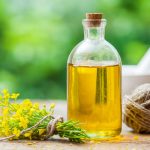 A variety of rape which is low in glucosinolates. Canola oil (canbra oil) contains less than 2% erucic acid.
A variety of rape which is low in glucosinolates. Canola oil (canbra oil) contains less than 2% erucic acid.
Brassica napus or Brassica campestris strains of the rapeseed plant, which were developed by plant breeders after the 1 960’s. This was because oil produced from rapeseed grown prior to 1971 contained 30%-60% erucic acid (high dietary levels of which were associated with cardiac lesions in experimental animals via toxicology testing). By 1974, canola varieties producing oil containing less than 5% erucic acid constituted virtually all of that year’s Canadian rapeseed crop, and Canadian breeders continued to develop new canola varieties with ever-lower erucic acid content.
In 1982, Canada filed with the U.S. Food and Drug Administration (FDA) to have low-erucic-acid rapeseed (LEAR) oil affirmed to be GRAS (Generally Recognized As Safe) which the FDA did. LEAR was one of the first foodstuffs to be determined to be “substantially equivalence” under the OECD-defined criteria for “substantial equivalence” because LEAR was shown (in OECD petition) to be very similar to, and composed of the same basic components as, traditional rapeseed oil (and other commonly consumed vegetable oils) except for a lower level of erucic acid (the component of concern, per above).
